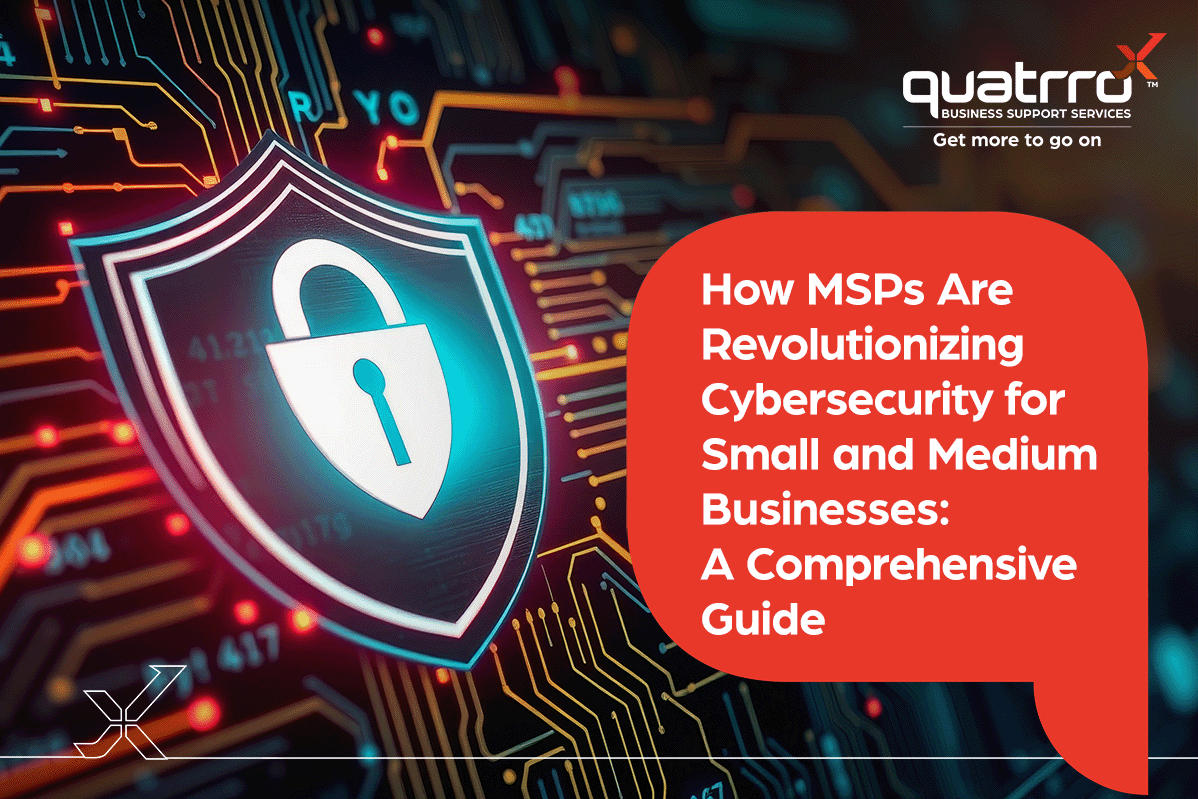Blog Details
What’s the Difference Between EDR/XDR and Enterprise Antivirus
October 31, 2023

Introduction
Enterprise antivirus (AV) software has been the mainstay of cybersecurity for decades. However, as cyber threats become more sophisticated and focused, antivirus software becomes less effective.
Endpoint detection and response (EDR) and extended detection and response (XDR) are two emerging technologies that provide more comprehensive cyber threat defense. EDR and XDR solutions can detect and respond to threats that traditional antivirus software may overlook, such as fileless malware, zero- day attacks, and insider threats.
In this blog we’ll discuss the key differences between enterprise AV, EDR, and XDR to help you decide which solution is right for your organization.
Understanding What Enterprise Antivirus, EDR, and XDR Are
 |
Enterprise Antivirus (AV)Enterprise antivirus (AV) software is intended to safeguard businesses from known malware threats. AV solutions detect known threat signatures by scanning files and systems. A malware signature is a unique pattern of data that is associated with a specific malware threat. Although AV can be very efficient against known threats, it is ineffective against new or unknown threats, such as zero-day attacks. Zero-day attacks are those that exploit vulnerabilities in software that are not yet known to the software vendor. In today’s cyber landscape, cyberattackers are finding new ways to infiltrate organizations every day, so zero-day attacks are becoming more common. |
 |
Endpoint Detection and Response (EDR)Endpoint Detection and Response (EDR) Endpoint detection and response (EDR) software collects and analyzes endpoint data looking for any suspicious activity in addition to signature-based detection. EDR solutions can detect threats that have not yet been identified by AV software, such as zero-day vulnerabilities, fileless malware, and advanced persistent threats (APTs). EDR solutions can also assist organizations in responding to threats in a timely and effective manner. EDR solutions can automatically quarantine or remove threats, as well as offer information to security professionals to analyze and remediate those events.
|
 |
Extended Detection and Response (XDR)Extended detection and response (XDR) is a more advanced form of EDR that integrates data from multiple sources, such as network traffic, cloud logs, and email, to provide a more comprehensive view of the threat landscape. XDR can detect threats that have evaded traditional AV and EDR solutions. For example, an XDR solution may be able to detect a phishing attack by correlating data from email, network traffic, and endpoint activity. XDR solutions can also help organizations to automate security tasks and to improve the efficiency of their security teams. |
 |
EDR and XDR solutions can be more expensive than enterprise AV, but they offer a number of benefits, including:
|
Comparison of AV, EDR, and XDR
| Feature | Enterprise AV | EDR | XDR |
|---|---|---|---|
| Threat detection | Good against known threats, but not as effective against new or unknown threats. | Good against new and unknown threats, including fileless malware, zero-day attacks, and insider threats. | Excellent against new and unknown threats, can detect threats that have evaded traditional AV and EDR solutions. |
| Visibility | Provides visibility into endpoint activity. | Provides deeper visibility into endpoint activity, as well as network traffic and cloud logs. | Provides the most comprehensive visibility into the security landscape, including data from endpoints, networks, cloud applications, and other security tools. |
| Response | Can automatically quarantine or remove threats. | Can automate a wider range of security tasks, such as investigating and remediating incidents. | Can automate the most complex security tasks, such as hunting for threats and responding to incidents in real time. |
| Cost | Least expensive option. | More expensive than enterprise AV, but less expensive than XDR. | Most expensive option, but offers the most comprehensive protection. |
Statistics on the effectiveness of EDR/XDR
EDR and XDR solutions have been shown to be very effective in detecting and responding to cyber threats.
A new record for has been reached, with ransomware affecting 71% of enterprises, according to the Cyberthreat Defense Report 2022 from the 2022 CyberEdge Group.
According to recent research from Nemertes, EDR can help reduce serious security incidents by up to 50%.
The adoption of cloud-based and on-premises EDR systems will increase 26% year-over-year and is expected to be worth $7.273 million by 2026, according to the Endpoint Detection and Response Global Market Outlook report.
By the end of 2023, according to Gartner, more than 50% of businesses will have switched to EDR from outdated antivirus software and legacy endpoint security solutions.
A Forrester report predicts that by 2024, 50% of enterprises will have begun to consolidate their standalone security products, including EDR, NDR, and UEBA, into comprehensive XDR platforms.
In addition to these statistics, EDR/XDR solutions have been credited with helping organizations to prevent and respond to a wide range of cyberattacks, including:
Ransomware attacks
Data breaches
Advanced persistent threats (APTs)
Insider threats
These studies demonstrate that EDR/XDR solutions can be a valuable investment for organizations of all sizes. By investing in EDR/XDR, organizations can improve their security posture and reduce the risk of cyberattacks.
Concerns about implementing EDR/XDR
Some companies may be concerned about the cost of implementing EDR/XDR solutions. However, it is important to remember that the cost of a security incident can be much higher than the cost of implementing an EDR/XDR solution.
According to IBM’s Cost of a Data Breach Report 2023,
The global average cost of a data breach in 2023 was $4.45 million, a 15% increase over 3 years.
51% of organizations are planning to increase security investments as a result of a breach, including incident response (IR) planning and testing, employee training, and threat detection and response tools.
Here are some tips for overcoming concerns about implementing EDR/XDR:
Start with a pilot project. You don't have to implement EDR/XDR across your entire organization at once. Start with a pilot project to test the solution and make sure that it meets your needs.
Choose a managed security service provider (MSSP). If you are concerned about the complexity of EDR/XDR solutions, you can choose to partner with an MSSP to help you implement and manage your EDR/XDR solution.
Get buy-in from senior management. It is important to get buy-in from senior management before implementing EDR/XDR. This will help to ensure that you have the resources and support you need to implement and manage the solution successfully across the organization.

Real-world examples of EDR/XDR in use
EDR and XDR solutions are being used by organizations of all sizes to protect themselves from cyber threats. Here are a few real-world examples:
A sophisticated assault used a web application's flaws to target a financial organization. After initially gaining access via a compromised endpoint, the attackers moved laterally throughout the network. While the suspicious behavior on the endpoint was picked up by EDR, the lateral movement and communication with a command-and-control server went undetected. However, XDR combined data from network traffic and the infected endpoint, exposing the full attack chain and allowing security teams to stop the attack before data exfiltration took place.
An organization identified unusual login attempts on a user's endpoint, which triggered an alert from the EDR system. Despite being isolated, this incident did not provide a clear picture of the attacker's motivations. The security team employed XDR capabilities to integrate endpoint activity with network logs, revealing a pattern of brute-force efforts across multiple endpoints. Because of this contextual information, they were able to identify a concerted attack campaign targeting employee credentials.
A healthcare organization expanded its digital infrastructure with cloud-based patient data management. Although EDR had endpoint coverage, it was unaware of the cloud environment. By using XDR, the business had a consolidated picture of endpoint, network, and cloud activity. As a result, they were able to proactively reduce risks and identify attempts at unauthorized access to patient records across the ecosystem.
Conclusion
Enterprise antivirus (AV) is still an important tool for combating known risks, but it is insufficient for combating emerging and advanced threats. Endpoint detection and response (EDR) and extended detection and response (XDR) provide more extensive cyber threat prevention than antivirus (AV), but they are more expensive.
The best choice for an organization will depend on its specific security needs and budget. Organizations with limited budgets may choose to start with AV and add EDR or XDR later as their needs grow. Organizations with higher budgets and more complex security needs may choose to implement EDR or XDR from the outset. Regardless of which solution you choose, it is important to have a layered security approach that includes multiple security solutions. This will help to protect your organization from a wider range of threats.
EDR and XDR solutions are essential tools for any organization that wants to protect itself from today's sophisticated cyber threats. By following the recommendations above, you can choose and implement the right EDR/XDR solution for your organization and better protect your organization in today’s ever- evolving cyber landscape.
We Would Love to Partner With You
If you are unsure which solution is right for your organization, contact us to chat with one of our cybersecurity experts. We can help you assess your security needs and recommend the right solution for your organization.








